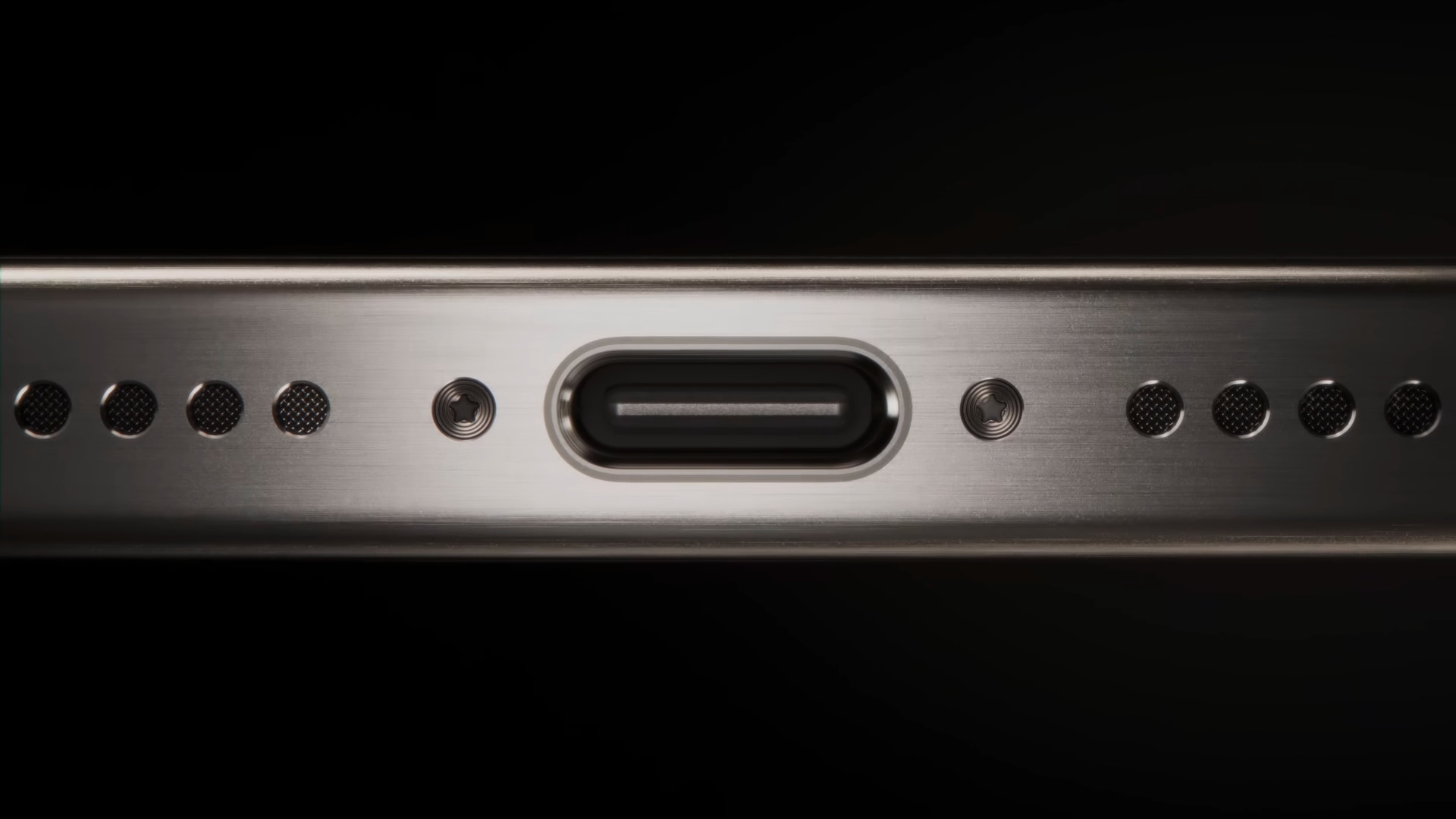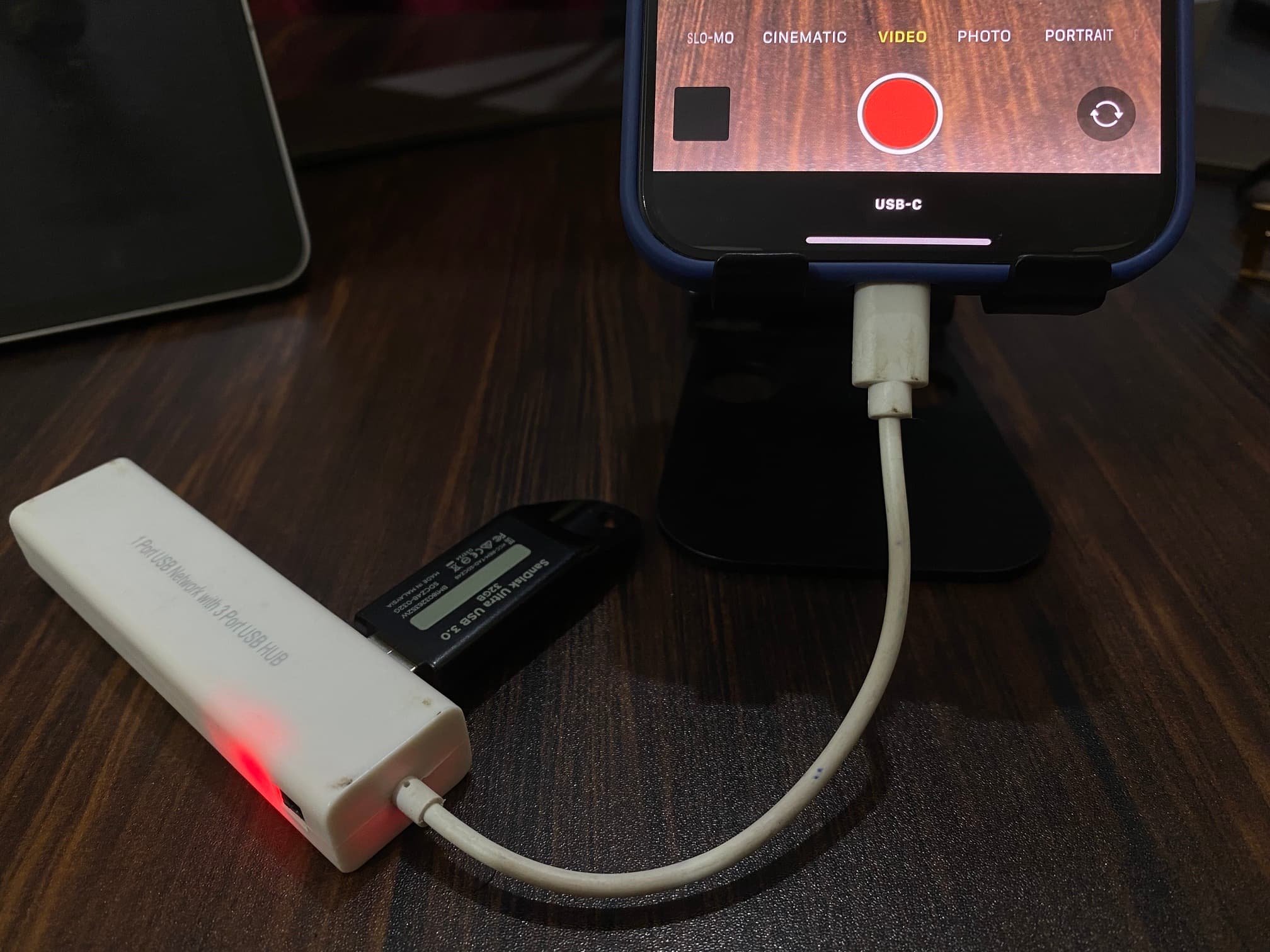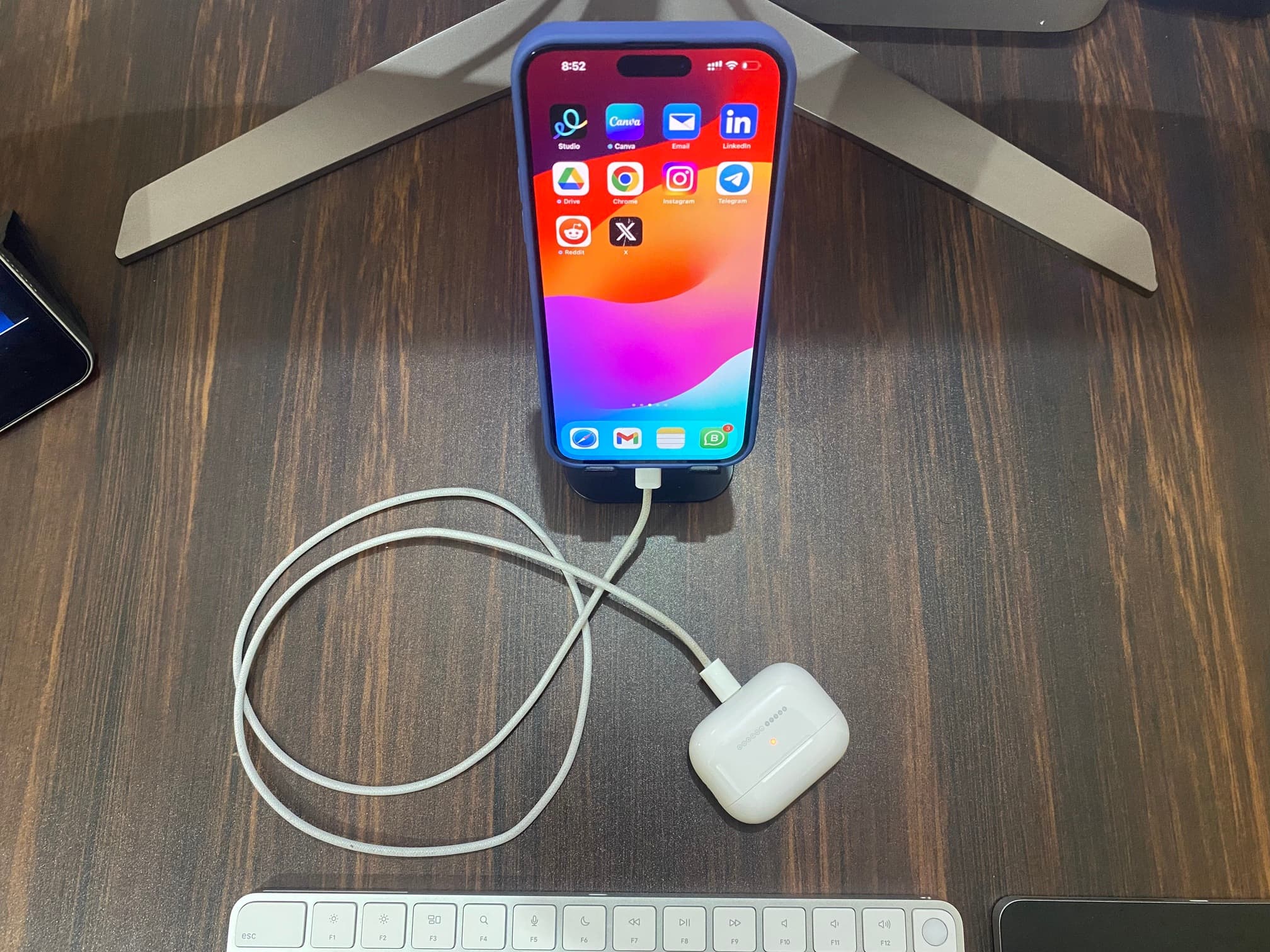Learn about all of the productive things you can do with the built-in USB-C port on the iPhone 15 and iPhone 16 models.

1. One cable for all your charging needs
Apple’s MacBooks and iPads, as well as almost all Android phones, are outfitted with the ubiquitous USB-C connectors. Recent iPhones, AirPods, and the updated Magic accessories have also adopted USB-C. As a result, you can charge all those devices with a single USB-C cable instead of juggling between USB-C and Lightning.
2. Record ProRes video
One of the significant benefits to having a USB-C port on your iPhone is the ability to shoot ProRes video in 4K resolution at up to 120 frames per second directly to external storage. All you need is an SSD enclosure like this Dockcase accessory that attaches to your iPhone via MagSafe. Otherwise, you’ll be limited to 4K resolution at 30 fps when recording video to the iPhone’s internal storage.

3. Fast data transfer speeds up to 10Gbps
Though ProRes files can get massive quickly, transferring them via the USB-C port on the iPhone Pro models is easy thanks to support for USB 3.2 Gen 2 speeds at up to 10 gigabits per second. However, you’ll need to buy a Thunderbolt cable to hit those speeds because the charging cable included in the box only supports USB 2.0 speeds of up to 480 Mbps.
Note: The USB-C port on the regular iPhone 15 and iPhone 16 models is restricted to USB 2.0 speeds.
4. Connect SD cards and external storage devices
You can connect external USB-C storage devices to your iPhone, including thumb drives, hard drives, and SSDs. Many devices can be plugged directly into the iPhone’s USB-C port, but others may require an appropriate adapter. If the power requirement of the external device exceed 4.5 watts, you’ll need to connect it to a power bank or a similar power source.
With the storage device connected, go to the Files app, and select the device to copy or paste files between local iPhone storage and the external drive.

5. Share power with other devices
The built-in USB-C port connector supports power sharing, a convenient feature that permits you to charge your AirPods, Apple Watch, another iPhone or Android phone, etc.

6. Connect your iPhone to an eternal display device
With an appropriate cable or adapter, you can connect your iPhone to an external display like a computer monitor or television to watch videos, photos, slideshows, and other content on the biggest screen in your home.
Your iPhone also supports the DisplayPort protocol via USB-C, meaning you can connect it to a USB-C display with support for up to 4K resolution and a 60Hz refresh rate. However, you’ll need a Thunderbolt 4 cable or one that supports USB 3.1 or higher.
To manage how your iPhone works with the connected USB-C display, go to Settings > Display & Brightness. Here, you can also choose between HDR or SDR modes.
And with an appropriate adapter that has an HDMI 2.0 port, your iPhone can output video at 4K 60Hz in HDR10 or Dolby Vision to a supported TV or display.
7. See your iPhone’s screen on an iPad
You can use your iPad as an external display for your iPhone with a little help from an external video capture card and the free Orion app.
8. Use Ethernet on your iPhone
The iPhone’s USB-C port allows you to connect it to Ethernet for the fastest networking and internet speeds. All you need is an appropriate USB-C dongle equipped with an Ethernet port.
9. Record audio with an external microphone
You can plug an external USB-C microphone directly into your iPhone’s USB-C port and use it in the Voice Memos app or another suitable app for audio recording. This is a very convenient feature for video creators and musicians.
10. Listen to lossless audio
Like the defunct Lightning port, the USB-C port on your iPhone supports lossless audio output via wired headphones such as Apple’s USB-C EarPods (you may need to use a USB-C to 3.5 mm headphone adapter for standard headphones without USB-C).
Note: Lossless audio is not supported via Bluetooth.
11. Use with CarPlay and other USB accessories
The USB-C port on your iPhone is not limited to the aforementioned devices; many other USB-C accessories are supported on iOS, including external keyboards, mice, power banks, fans, and the like. You can also use the iPhone’s USB-C connection for wired CarPlay on supported vehicles.
Important things to keep in mind
- External power: Some accessories like certain audio capture devices may require an external power source when the iPhone’s USB Power Delivery at up to 4.5 watts doesn’t provide enough power.
- Not everything works: Some storage devices may not work at all with your iPhone. Check the product description or contact the manufacturer for more information.
- Slow internet speeds: Some USB-C accessories may interfere with your iPhone’s Wi-Fi or reduce your cellular data speeds significantly. Try swapping your USB-C cable or adapter for one from a reputable manufacturer.